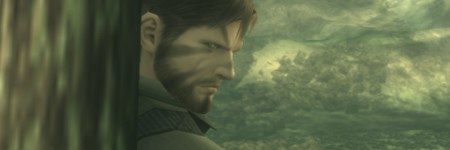10 incredible facts you never knew about Metal Gear Solid 2 and 3
Hidden gems

Konami has just released a new collection of Metal Gear games for the Vita, which neatly ties Sons of Liberty and Snake Eater together into one portable package.
We thought it was a perfect time, then, to delve into some of the more bizarre facts and legends about the two games.
But, before we begin, a quick warning: this feature contains spoilers for the series, so if you haven't finished either of these games yet, you'll probably want to bookmark this page for later reading.
Metal Gear Solid 2: Sons of Liberty It's the fourth canonical game in the series
It's the fourth canonical game in the series
The first was simply titled Metal Gear and was released in 1987 on the MSX2 home computer. This was followed by Metal Gear 2: Solid Snake in 1990 (also on MSX2) and Metal Gear Solid on the PSone in 1998. Snake's Revenge on the NES doesn't count, apparently.
To add further confusion to the mix, the PS2 sequel was originally slated to be named Metal Gear Solid III (the 'III' being a reference to the three tall buildings that dominated the New York skyline at the time).
We never saw the original endingMGS2 was heavily cut prior to release due to the tragic events on September 11th, 2001. An ending scene in which an American flag is draped over Solidus Snake's body, as well as the toppling of the Statue of Liberty, never made it into the final version.
It's peppered with Easter Island headsMoai (or Easter Island head) statues can be found throughout the game. Why? It's a Konami hallmark - the Japanese developer has included Moai statues in its titles ever since they were first seen as enemies in Gradius, a horizontal shmup.
The Tanker is named Discovery for a very good reasonSure, 'Discovery' is an allusion to the core notion of staying hidden in the MGS games, but it's also the name of several craft that have proven pivotal in humanity's greatest advances.
Perhaps the two most prominent of these are the Space Shuttle Discovery (which carried the Hubble Space Telescope) and the RRS Discovery (which took Scott on his first Antarctic mission).
Snake's lucky charm is a packet of cigarettesOtacon gives you a good talking to about bringing tobacco on a mission, of course, reminding you of the surgeon general's warning about their affect on your health.
But, cigarettes can actually save your life in the game by exposing sensors linked to plastic explosives that can, if triggered, end the game instantly.
 Metal Gear Solid 3: Snake Eater
Make Snake vomit
Metal Gear Solid 3: Snake Eater
Make Snake vomit
When you open the Survival Viewer, you can rotate the image of Snake that appears - keep doing it and pretty soon he'll lose his lunch.
KuwabaraColonel Volgin likes to use the phrase "Kuwabara kuwabara": but, what does it mean?
Well, it gets somewhat lost in translation, but it's essentially a Japanese phrase meaning 'to ward off being struck by lightning'.
Which makes sense, since Volgin has a penchant for throwing a lot of electricity around.
Kill OcelotSince MGS3 takes place a long time before the events of all the other games, there were always going to be issues regarding continuity.
There's an acknowledgement of this if you kill Ocelot after you've knocked him unconscious - doing so causes a time paradox that results in Game Over, you see. There's even a Trophy that references this in the HD Collection, entitled Problem Solved, Series Over.
The End's endThere are two ways to kill legendary sniper The End without directly facing him in battle.
The first is to shoot him while he's in his wheelchair in a sequence long before the confrontation. The other is to enter the battle, then save and turn off the system. If you don't play the game for a week, he'll have died of natural causes.
Son of The BossSnake (or as he would be later known: Big Boss) from Metal Gear Solid 3 makes life very difficult for his son Solid Snake, the 'true' protagonist of the rest of the series.
Big Boss advises Solid's archenemy Ocelot on the type of gun he should be using in battle, for example, based on the young soldier's shooting technique. He suggests a revolver, and the rest is history.
